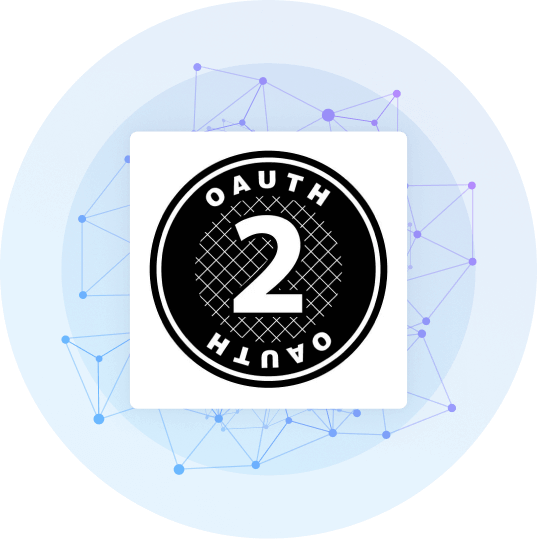Uncovering the Mystery of OAuth 2.0

OAuth 2.0 is an authorization protocol that simplifies access to data on web servers. It allows client applications to access resources more securely. OAuth 2.0 was developed to overcome the limitations of its predecessor, OAuth 1.0, and provide a more flexible and user-friendly framework for authorization. The core principles of OAuth 2.0 revolve around the separation of roles and responsibilities between different entities involved in the authorization flow, which includes the resource owner, client application, authorization server, and resource server.
In this blog, we highlight some of the key features and principles of OAuth 2.0. For a comprehensive review and description of CData's OAuth support, check out our whitepaper.
Why is OAuth 2.0 important?
OAuth 2.0 is important two main reasons. First, it reduces the risk of password theft and unauthorized access by allowing client applications to access resources without requiring the user to share their credentials. Second, OAuth 2.0 provides greater access control, allowing resource owners to specify the permissions granted to client applications. This control helps ensure that only the necessary data is accessed by third-party applications, thereby enhancing privacy and data protection.
OAuth grant types
Grant types in OAuth 2.0 define the way a client application obtains an access token from the authorization server. There are several grant types available, each designed to suit specific scenarios:
Authorization Code Grant: This grant type is used in an interactive manner involving a user. It’s commonly employed in scenarios where user permission is necessary for accessing resources.
Implicit Grant: Like the Authorization Code Grant, the Implicit Grant is used in an interactive context. However, instead of exchanging an authorization code, the access token is directly returned to the client application. This flow is suitable for scenarios where user permission is required but the client application cannot securely store the client secret.
Client Credentials Grant: This grant type is used in a non-interactive (machine-to-machine) context where the client application acts on its own behalf without involving the resource owner and is ideal for authorizing resource access to a machine without user context.
Password Grant: This grant type allows the client application to directly exchange the resource owner's username and password for an access token. However, this grant is generally not recommended as it involves sharing the user's login information and goes against the purpose of OAuth.
CData supports OAuth
CData Drivers offer comprehensive support for implementing OAuth, and cater to different application types and environments:
Retrieving OAuth tokens: CData Drivers offer multiple options for acquiring the OAuth token, including support for tokens obtained from external sources. This flexibility permits smooth integration with diverse OAuth implementations.
Desktop application: For desktop applications, CData Drivers facilitate the OAuth flow by opening a web browser to direct users to log in to the target service. The driver establishes a background process to manage the HTTP response and retrieve the OAuth token.
Web application: In the case of web applications, CData Drivers facilitate a manual implementation of the OAuth flow. Users need to be redirected to the authorization URL of the service and then brought back to a specific page within the web application.
OAuth for third parties (OEMs): CData supports OEM customers by providing headless OAuth processes and the option to implement the ITokenStore interface for custom access storage.
JWT-based OAuth: CData Drivers make use of the JWT-based OAuth properties for data sources that support certificate-based authentication.
Connection settings: CData Drivers provide dedicated sections in their documentation for establishing an OAuth connection specific to each driver. These sections guide users through the necessary configurations related to OAuth.
OAuth settings file: The OAuth flow within CData Drivers involves storing the received tokens and expiration details in an encrypted file called 'OAuthSettings.txt'. This file contains information such as the access token, refresh token, token lifespan, and timestamp.
Essential highlights of OAuth 2.0 protocol:
- The OAuth flow involves obtaining an authorization code and exchanging it for an access token, which is used to access protected resources.
- It specifies four main grant types: authorization code, client credentials, password, and implicit. Each grant type is designed for specific scenarios and client types.
- OAuth provides enhanced security by reducing the risk of password theft and unauthorized access. It also allows users to grant limited access to protected resources without sharing usernames and passwords.
- Client registration is required for applications seeking access to protected resources. This can be done through manual registration or developer portals by OAuth service providers.
- Understanding technical terms such as resource owner, OAuth application, client ID, client secret, authorization server, resource server, and access token is crucial for navigating the OAuth authentication process effectively.
This blog is a high-level overview of our OAuth support. Read our whitepaper for in-depth details. Learn how to get started with OAuth in CData connectivity solutions with this knowledge base article.
Get started with CData today with a free trial.
Join our community to learn from experienced CData users, gain insights, and get the latest updates.





